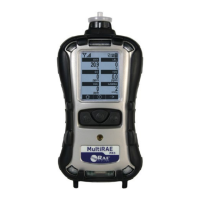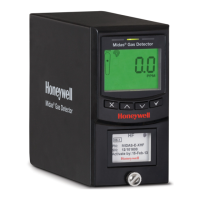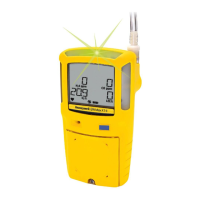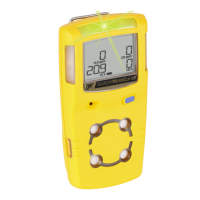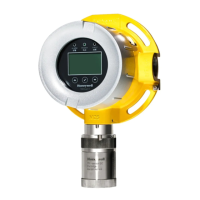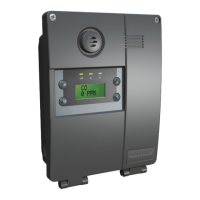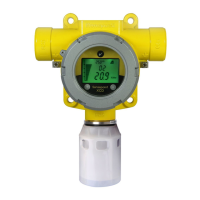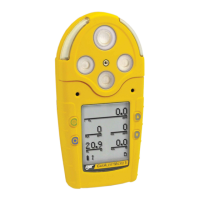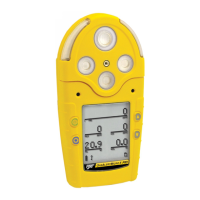the PID’s reading shows “- - -”. Once the PID lamp is warmed up, the display shows the actual
value.
Calibration Status
The instrument displays this icon next to the sensor that requires calibration:
Calibration is required (and indicated by this icon) if:
l
The lamp type has been changed.
l
The sensor module has been replaced with one whose calibration is overdue.
l
The defined period of time between calibrations has been exceeded.
l
If you have changed the calibration gas type without recalibrating the instrument.
l
The sensor has failed a previous calibration.
Bump Status
The instrument displays this icon next to the sensor that requires bump test:
A bump test is required (and indicated by this icon) if:
l
The defined period of time between bump tests has been exceeded (bump test overdue).
l
The sensor has failed a previous bump test.
l
The sensor(s) should be challenged on a periodic basis.
Toggle Display: Alternating Between Correction Factor and
Reading
A MultiRAE’s display can alternate between showing readings for LEL and VOC and their
respective correction factors. To enable this feature, you must do the following:
1. Use the USB cable to connect the MultiRAE to a PC running Safety Suite Device
Configurator (SSDC).
2. Step through the screens on the MultiRAE using the [N/-] button until you see the
screen that says, “Enter Communications Mode.”
3. Press [Y/+].
4. With “PC” selected, press [Y/+].
5. Start Safety Suite Device Configurator (SSDC).
6. Log in (default username is “administrator”. Default password is “Default123”)
7. Click “Settings.”
Honeywell MultiRAE Series™ 55 User Manual
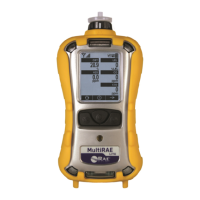
